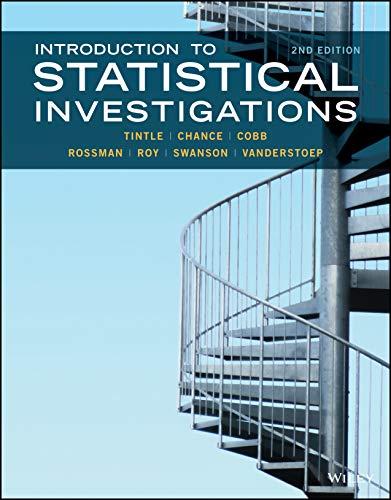Recall Exercise 1.3.34 on eavesdropping dogs. In another test, the researchers had the beggar and the donors
Question:
Recall Exercise 1.3.34 on eavesdropping dogs. In another test, the researchers had the beggar and the donors perform the exact same tasks except the beggar did not say anything. When 15 dogs watched this scenario, 10 of them approached the positive donor when released.
a. Write out the hypotheses in symbols if we want to test whether dogs are more likely to approach the positive donor.
b. Using the One Proportion applet, determine a standardized statistic for this test. Based on your standardized statistic, do you have strong evidence that dogs are more likely to approach the positive donor? Explain how you are determining this.
c. Using the One Proportion applet, determine a p-value for this test. Does your p-value back up your answer from part (b)? Explain how you are determining this.
Data from Exercise 1.3.34
Do dogs pick up information by eavesdropping on interactions between people? Researchers in Argentina (Freidin, et al., 2013) wanted to see whether dogs would show a preference for people based on their cooperativeness toward others. A dog watched a man acting as a “beggar” approach two women in a room. The man would ask for food. One woman (the “positive” donor) would give the beggar a corn flake and the beggar would take it and say, ‘‘Qué rico!’’ (“So tasty!”). When the beggar approached the other woman (the “negative” donor) and asked for a corn flake, he would take it and put it back on the plate where it came from and say ‘‘Qué feo!’’ (“So ugly!”). The beggar would then leave the room. The dog, after watching all this, would be released and the researchers would see which donor the dog would approach first. Fifteen dogs were tested with this scenario and 13 of them approached the positive donor.
Step by Step Answer:

Introduction To Statistical Investigations
ISBN: 9781119683452
2nd Edition
Authors: Beth L.Chance, George W.Cobb, Allan J.Rossman Nathan Tintle, Todd Swanson Soma Roy





